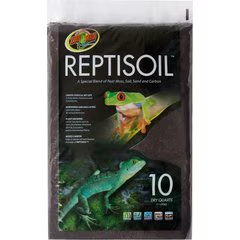Reptile Terrarium Checklist: 7 Must-Buy Supplies
PetMD Editorial
Reptile Terrarium Checklist
Setting up a terrarium properly is one of the most important things you can do to care for a reptile. An inappropriate habitat can lead to serious side effects for your reptile, including death. Here are 7 must-buy supplies for a reptile terrarium.
1. Terrarium
Of course no terrarium is complete without the actual enclosure. However, choosing a terrarium that’s the right size and shape is vital. There are two common terrarium shapes: long and tall. As a general rule, land-dwelling reptiles feel most at home in longer terrariums because they provide more surface area to roam, whereas reptiles that like to climb benefit most from taller enclosures. Marine reptiles like turtles, meanwhile, require some pool areas in the terrarium for the occasional swim. Since many reptiles grow quickly, it is also recommended that you buy a habitat with their adult size in mind.
Reptile Terrarium Checklist: 7 Must-Buy Supplies
 Zoo Med Repti Calcium with D3 Reptile Supplement, 3-oz jarRated 4.7 out of 5 stars350Reviews$4.99Chewy Price
Zoo Med Repti Calcium with D3 Reptile Supplement, 3-oz jarRated 4.7 out of 5 stars350Reviews$4.99Chewy Price Zoo Med Electrolyte Soak Reptile Supplement, 16-oz bottleRated 4.5 out of 5 stars69Reviews$9.92Chewy Price
Zoo Med Electrolyte Soak Reptile Supplement, 16-oz bottleRated 4.5 out of 5 stars69Reviews$9.92Chewy Price Zoo Med ReptiSoil Reptile Soil, 10-qt bagRated 4.8 out of 5 stars160Reviews$8.99Chewy Price
Zoo Med ReptiSoil Reptile Soil, 10-qt bagRated 4.8 out of 5 stars160Reviews$8.99Chewy Price Mazuri Original 5M21 Tortoise Food, 25-lb bagRated 4.7 out of 5 stars255Reviews$38.39Chewy Price
Mazuri Original 5M21 Tortoise Food, 25-lb bagRated 4.7 out of 5 stars255Reviews$38.39Chewy Price
3. Heating Lamps
Some reptiles have very particular needs when it comes to heating and lighting. Therefore, purchasing the right heat lamp and lighting for your new pet is vital, and depending on the reptile in question, some are able to get their heat and light from the same source. Others, meanwhile, require a separate heat pad or heat tape, which is usually constructed of foil strips wrapped in durable plastic film. If you decide to use heat tape, it is important that the temperature be regulated by a thermostat or a rheostat. This will extend the product's life and prevent any accidental burns.
4. Thermometer
While many pet reptiles require more heat than your home might provide, they can be susceptible to excessive heat, says Simon Starkey, BVSc, PhD, D.ABVP(Avian), Education Veterinarian and Technical Services Manage for PetSmart. To help curb the danger that too-hot temps may pose, place two thermometers in your pet’s habitat, Dr. Starkey suggests: one under the heat lamp—the hottest end of the habitat—and one at the other end. Adjust the bulb wattage up or down to meet your pet’s heat requirements, he recommends. Consult your veterinarian and check out resources such as PetSmart’s Care Guides to see the correct temperature and humidity ranges for your pet.
5. Hygrometer
Foggers and misters help maintain proper humidity in tropical terrariums.
6. Bedding/Substrate
Tropical terrarium substrates include reptile bark, reptile soil, coconut husk and moss. Desert terrarium substrates include specially formulated sands and reptile carpet.
7. Décor
Many reptiles, such as snakes and lizards, need hiding places to escape and release stress. Some decor can be sprayed with water to help humidify the terrarium